Now, please don’t take this title the wrong way: this list is not definitive. Which is why it is not entitled “The 5 Most Innovative Wristwatches Ever Made.”
It is specifically entitled “5 Of The Most Innovative Wristwatches Ever Made” because there are certainly more of them out there (this list could have encompassed 10, 15, or even 20!) and there are surely differing opinions.
For me, these five timepieces largely encompass comprehensive parts of what is great about the modern world of wristwatches. And I wanted to share my views with you.
Ulysse Nardin Freak
There are very few timepieces that have changed course of watch history, but Ulysse Nardin’s Freak is one of them. In fact, it is my opinion that the truly modern era of watchmaking began in 2000 with the introduction of the first Freak with its Dual Direct Escapement.
The shape of the escape wheels in the Dual Direct Escapement and the fact that there were two made it necessary for them to become lighter, more efficient, harder, more elastic, more resistant to wear, and above all friction-free so that they did not need lubrication.
The reason? Aside from their physics, the escape wheels were placed within a type of indefinable tourbillon (some have called it a karussel for lack of a better word, but this is incorrect) that simultaneously acts as the hour hand.
These escape wheels had no choice but to propel Ulysse Nardin – and with it the watch industry – into a new age.
Even though Ulysse Nardin first used a nickel-phosphorus LIGA material in this movement, it was finally silicon, the second most abundant element in the earth’s crust, that made the horological dreams of the brand and the escapement’s creator, Dr. Ludwig Oechslin, possible: Ulysse Nardin’s Freak kickstarted haute horlogerie into the age of silicon.
Ulysse Nardin’s continued exploration of the LIGA process put the company’s extensive research into real motion. Supplier Mimotec not only enabled the brand to create perfectly smooth, friction-free parts in nickel and nickel-phosphorus alloys that were ideal for prototyping, but also joined Ulysse Nardin in the quest for further research into silicon.
Ulysse Nardin had originally partnered with CSEM (Centre Suisse d’Electronique et de Microtechnique S.A) for its work with silicon in a group that at the time comprised Swatch Group, Rolex, Patek Philippe, Richemont, and the Federation of the Swiss Watch Industry (FH).
In 2006, Mimotec and Ulysse Nardin entered into a joint venture to explore the combination of LIGA and silicon, christening the new firm created from the partnership Sigatec.
The Freak broke major conventions in traditional watchmaking, and the brand continued to introduce new versions of it that acted as little wrist laboratories.
For information on the latest incarnation of the Freak, please see Living In Freaky Times: Ulysse Nardin FreakLab.
Quick Facts Ulysse Nardin FreakLab
Case: 45 mm, white gold
Movement: manually wound Caliber UN-210 with one-hour flying tourbillon, 7-day power reserve, silicon hairspring and escapement
Functions: minutes indicated by flying tourbillon carriage around dial, hours; date
Price: $95,000
Corum Golden Bridge
Okay, let’s think back to 1980 for a moment, even if you weren’t interested in watches at that time or weren’t even born yet.
The quartz crisis had just ripped through Switzerland, thousands of jobs were being lost, and brands were going under every day. Zenith had just tried to throw away the molds for the automatic El Primero movement, and the term independent watchmaker hadn’t been coined yet.
Yet Vincent Calabrese, whose self-declared horological aim was to “dare to think differently” (mind you, the AHCI, which he co-founded, wasn’t even a twinkle in his eye yet), created a baguette-shaped, single-bridge movement for Corum based on the invention of a straight-line baguette-shaped movement for which he earned a gold medal in 1977.
Modified, it went into Corum’s fully transparent watch. Yes, Corum was certainly an avant-garde, design-interested brand at that time, but this fully mechanical apparition not only survived the march of the super-cheap precision that quantifies a quartz movement, it has remained a haute horology design icon to this day – providing direct inspiration for other audacious, diaphanous designs in the era of the mechanical renaissance.
The original Golden Bridge’s case comprised two hand-faceted sapphire crystals cut in a difficult bombé-creusé shape that resembled a domed half of a cross-sectioned hexagon held together by four golden screws and two bases of yellow gold.
Remember: sapphire crystal was not in regular use at this time for watch crystals; this only followed about 15 years later. The crystal’s supplier, Comadur, relates that the greatest difficulty was polishing the intricately shaped object on both the inside and outside without leaving marks.
Another difficulty consisted in drilling the crystal with precision, with the supplier having to modify technology to achieve an acceptable level of assembly for this haute horlogerie product. A few years ago, a Corum spokesperson explained to me, “If we had to reproduce this timepiece today [as it was then], the manufacturing of the crystals would be easier as polishing technologies have improved.”
The Golden Bridge, so completely elegant in its transparency, was revamped with a modern new movement several years ago and now justifiably plays a central role at the modern Corum as one of its main four collection pillars.
For more about an especially artistic rendition of the Golden Bridge, please see The Corum Golden Bridge: Chasing The Dragon’s Tail.
Quick Facts Corum Golden Bridge Dragon
Case: 34 x 51 x 10.9 mm in red gold with or without 396 round-cut diamonds (approx. 4.15 ct); white gold with or without 80 baguette-cut diamonds (approx. 3.9 ct) and 312 round-cut diamonds (approx. 1.52 ct); titanium with black DLC coating
Movement: manually wound Caliber CO 113; 40 hours power reserve, 18-karat red gold plates and bridges
Functions: hours, minutes
Price: starting at about $80,000
Jaeger-LeCoultre Reverso Gyrotourbillon 2
I had to pick a Reverso.
I mean, really, what would a list like this be without the world’s first revolving wristwatch, a timepiece that continues to fascinate watch wearers 85 years after its introduction in 1931.
A wristwatch born of the need to protect its fragile crystal for use in sports competition (in this case polo), it can truly be said that this was one of the most innovative timepieces of its time, a real sports watch in its day.
Today, the Reverso remains as relevant as ever, but it is available in hundreds – if not thousands – of versions. If you put the first one from 1931 aside, which one is the most innovative?
More than a decade ago, Jaeger-LeCoultre began adding complications to the Reverso in a move to push the entire line into a more haute horlogerie place. The Reverso Gyrotourbillon 2 implements evolutions of some of the innovative and patented elements that were introduced in the Master-encased Gyrotourbillon of 2004, which featured an early double-axis tourbillon beating away within its movement.
At the time, the manufacture said that the Gyrotourbillon would become a line, a series – but it was never expressly stated that it would continue within the Master line, a logical choice thanks to its easy-to-work-with round case.
Imagine the surprise a few years later, while celebrating the 175th anniversary of this masterful company, to learn that the second Gyrotourbillon would come out in the rectangular Reverso case, which was more difficult to design because of its shape and the two-faced nature of the line. And it included perhaps the best finishing seen on a Jaeger-LeCoultre timepiece to this point.
Only 75 pieces were made of this Reverso containing a rare cylindrical, blued (!) hairspring – one of its main differences from the first Gyrotourbillon – beating inside its fascinating biaxial tourbillon rotating at 18.75 seconds (inside tourbillon) and one minute (outside tourbillon).
The front dial affords the cutaway displaying this little globe as much space and thus importance as the time display: the two quite literally share the space out between them. It’s only right, after all.
In this current year of celebrating 85 years of the Reverso, Jaeger-LeCoultre has gifted us with yet another delicacy: a refreshed and revamped Gyrotourbillon 2.
You can read all about the anniversary of the reversible timepiece in 85 Years Of The Jaeger-LeCoultre Reverso and learn every detail about the new version of the Gyrotourbillon 2 in The New Jaeger-LeCoultre Reverso Tribute Gyrotourbillon: Now More Comfortable To wear Through Even Slimmer Fit.
Quick Facts Jaeger-LeCoultre Reverso Tribute Gyrotourbillon
Case: 31 x 51.1 x 12.4 mm, platinum
Movement: manually wound Jaeger-LeCoultre Caliber 179 with mysterious flying double-axis tourbillon and hemispherical balance spring
Functions: hours, minutes, seconds; 24-hour indication
Limitation: 75 pieces
Price: €277,000
Richard Mille RM 027 Nadal
Six years ago, Richard Mille began extending the brand’s cadre of ambassadors by engaging world number one tennis player Rafael Nadal. This wasn’t the biggest surprise. That honor went to the watch the brand created for him.
Is this a sports watch? Well, that was the main question.
It is a tourbillon watch, which is normally not something a manufacturer would dare to put into a timepiece destined for heavy sports use. But it was built to take anything and everything Nadal could dish out – and dish it out he did. He broke about six of them in the course of testing, but in the end the RM 027 – improved by Nadal’s beatings and the brand’s consistent R&D – took the proverbial licking and kept on ticking.
Even the tourbillon.
How did he test it? On court.
“But,” I hear you saying, “Tennis players don’t wear watches!”
True. However, Nadal agreed to wear his Richard Mille watch during competitive play mainly because compared to a “normal” watch, the RM 027 weighs next to nothing: 18 grams with its polycarbonate strap – and that achieved with no plastic parts (except for the strap).
“It’s so ergonomic and comfortable that he doesn’t feel anything,” Mille explained at the time. The real-life testing ground for this groundbreaking haute horologerie wristwatch with the astounding price tag of more than $500,000 was indeed the conditions of playing the professional tour: repeated shock, sweat, extreme temperature changes, and the various altitudes and humidities associated with being in a different part of the world each week.
Not to mention Nadal’s blistering strokes and grueling training, which includes the sauna and steam room (yes, it went in there too).
According to the late Vic Braden, the world’s most celebrated tennis teacher before his passing, tennis racquets also borrow from aerospace industries. We know that many of Richard Mille’s watch components do, too.
“The key factor in achieving ball speed is the stiffness of the racquet,” Braden told me. “Some NASA discoveries on how to make material very stiff but light provided players with an opportunity to swing faster with less effort. This changed the way the game was played immediately and why players can now be aggressive from the baseline, which was nearly impossible in the 1950s and ’60s [with wooden racquets].”
The latest version of this sporty masterpiece arrived just in time for the French Open in Roland Garros 2015, where Nadal quite ceremoniously debuted it. See all the details on it in Richard Mille RM 27-02 For Rafael Nadal: The Quintessential Sports Tourbillon.
Quick Facts Tourbillon RM 27-02 Rafael Nadal
Case: 47.77 x 39.7 x 12.25 mm, NTPT carbon and TPT quartz, a material co-developed by Richard Mille and North Thin Ply Technology; bezel and case back assembled directly onto the NTPT base plate; water-resistant to 50 m; sapphire crystal on front
Movement: manually wound caliber with one-minute tourbillon weighing 3.35 g; 70 hours power reserve; certified to withstand 5,000 Gs
Functions: hours, minutes
Limitation: 50 pieces
Price: € 777,000 / 734,500 Swiss francs
A. Lange & Söhne Lange 1
Innovation is not only important where mechanics are concerned, but also in terms of design.
On October 24 1994, when this timepiece was introduced to the world’s press, a shockwave went through the watch industry. Not only had one of the most illustrious historical brands been resuscitated (never mind all it took to get to that point), but the sheer audacity of the off-center displays – which had little to no historical precedence for A. Lange & Söhne – was enough to take a collector’s breath away.
The eccentric design cleaned up the dial to make for superb visual balance of the two subdials, while the power reserve hand and the date window were punctuated by said date window: even though this large rectangle with a mullion should not have by rights been able to find well-designed room here, it did.
Now let’s talk about that date. This was the modern era’s first large date (A. Lange & Söhne calls it the “outsize” date), and more than 20 years later it is nearly impossible to remember what kind of craze the emergence of this date window triggered.
Frankly, practically every major brand decided to develop or “get” their own large date displays, which eventually led movement specialist Dubois Dépraz to add it to some of its modules for common consumption.
In terms of technology, it is hard to beat the Lange 1 for quality. The late Günter Blümlein, co-founder of the modern incarnation of the company, once said that when you strap a Lange to your wrist, you should just about be able to hear the particular sound the closing of a Mercedes door makes – and so it is for so many enthusiasts of German watches.
Quality is the name of Lange’s game, and this begins with the untreated German silver plates and bridges and doesn’t even nearly end with the fact that each movement is assembled twice before it is encased.
At its twenty-first anniversary in 2015, the Lange 1 received a revamped movement, marking the fiftieth caliber of the modern era by A. Lange & Söhne. The modifications to the movement are hardly to be seen on the outside; most of the differences to the original caliber are small but meaningful.
For two very limited Lange 1 versions, please see Behind The Lens: Rare Lange 1 Limited Editions.
Quick Facts Lange 1 as of 2015
Case: 38.5 x 9.8 mm, yellow gold, pink gold or platinum
Movement: manually wound Caliber L121.1 crafted in untreated German silver with twin spring barrels (72 hours of power reserve); assembled twice
Functions: hours, minutes, small seconds; offset large date, power reserve indication
Price: $34,700 for yellow or pink gold, $49,500 for platinum
Which watches would you include in your list of “5 Of The Most Innovative Wristwatches Ever Made”?





















































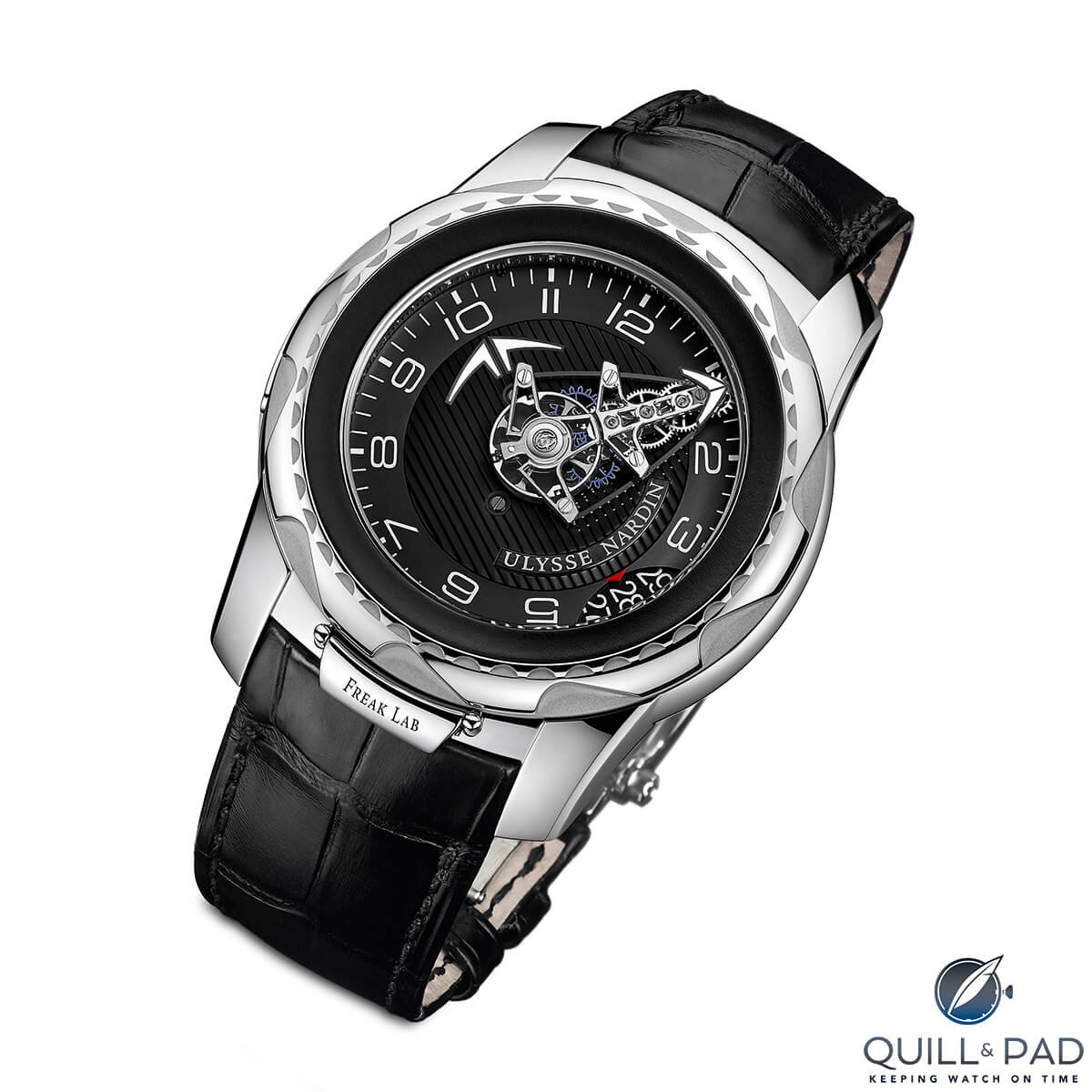
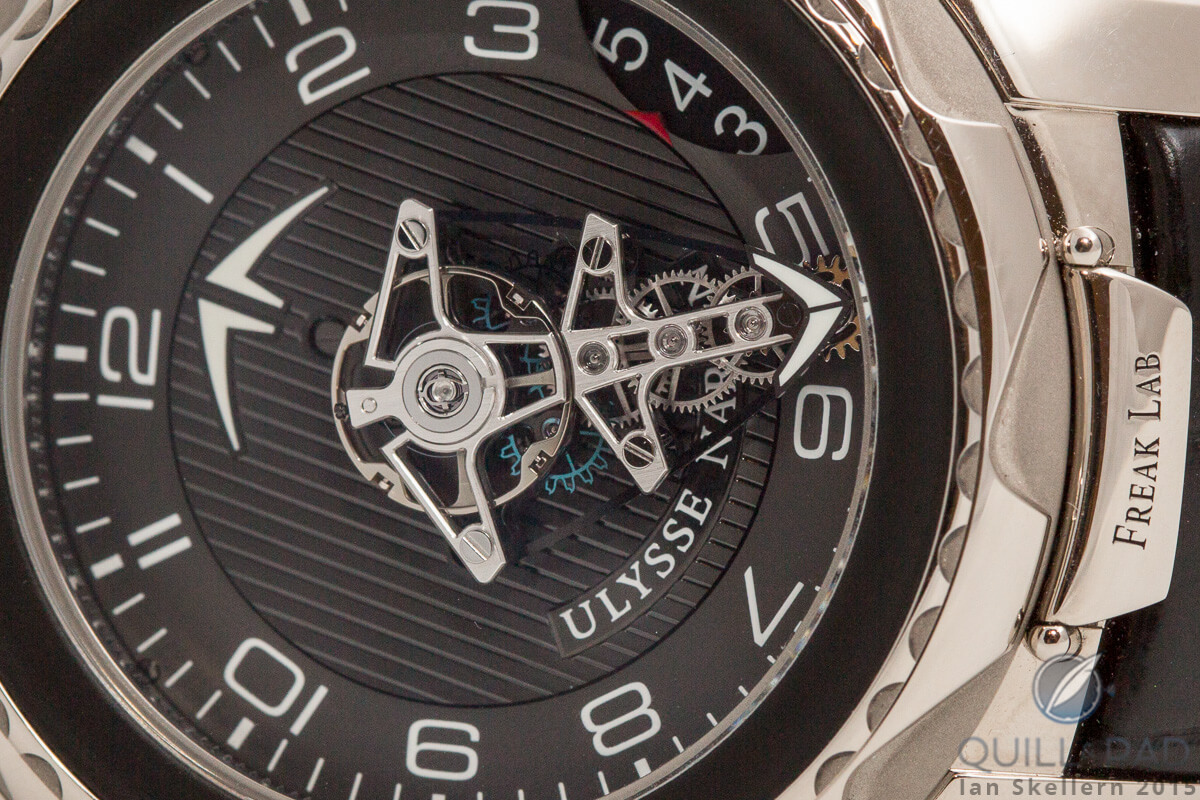
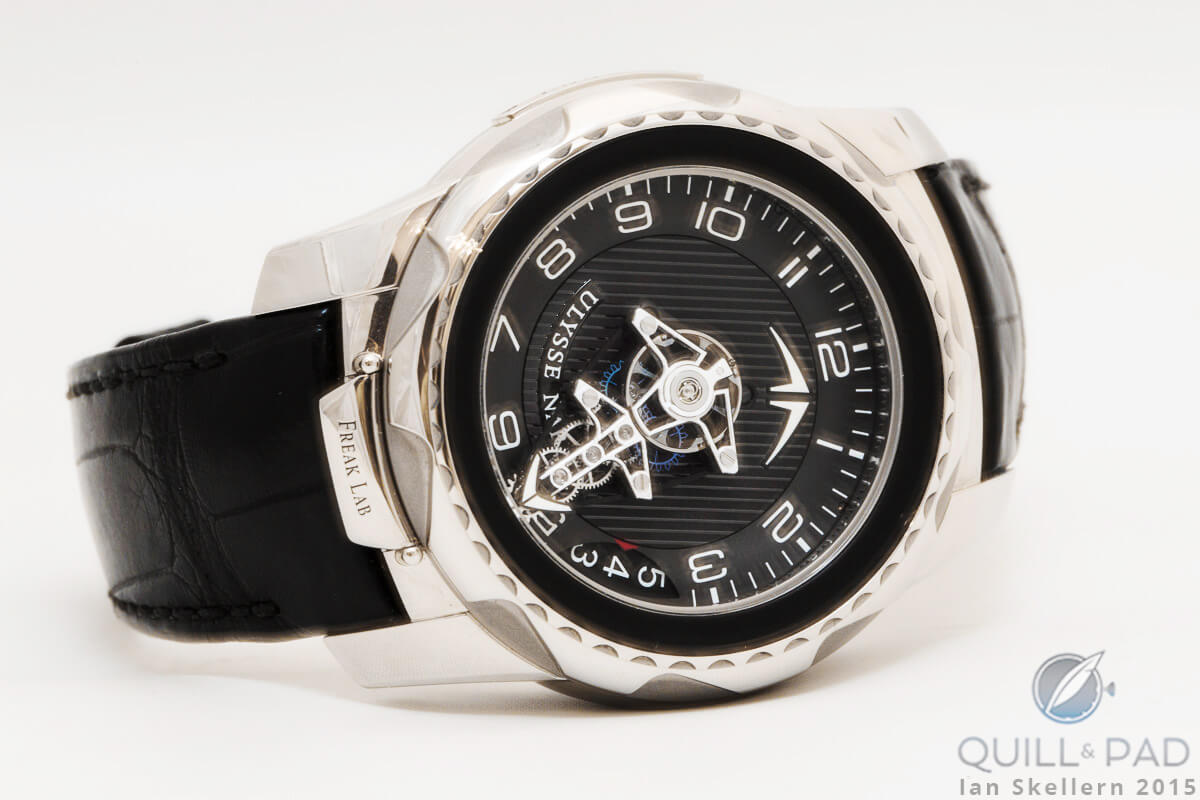
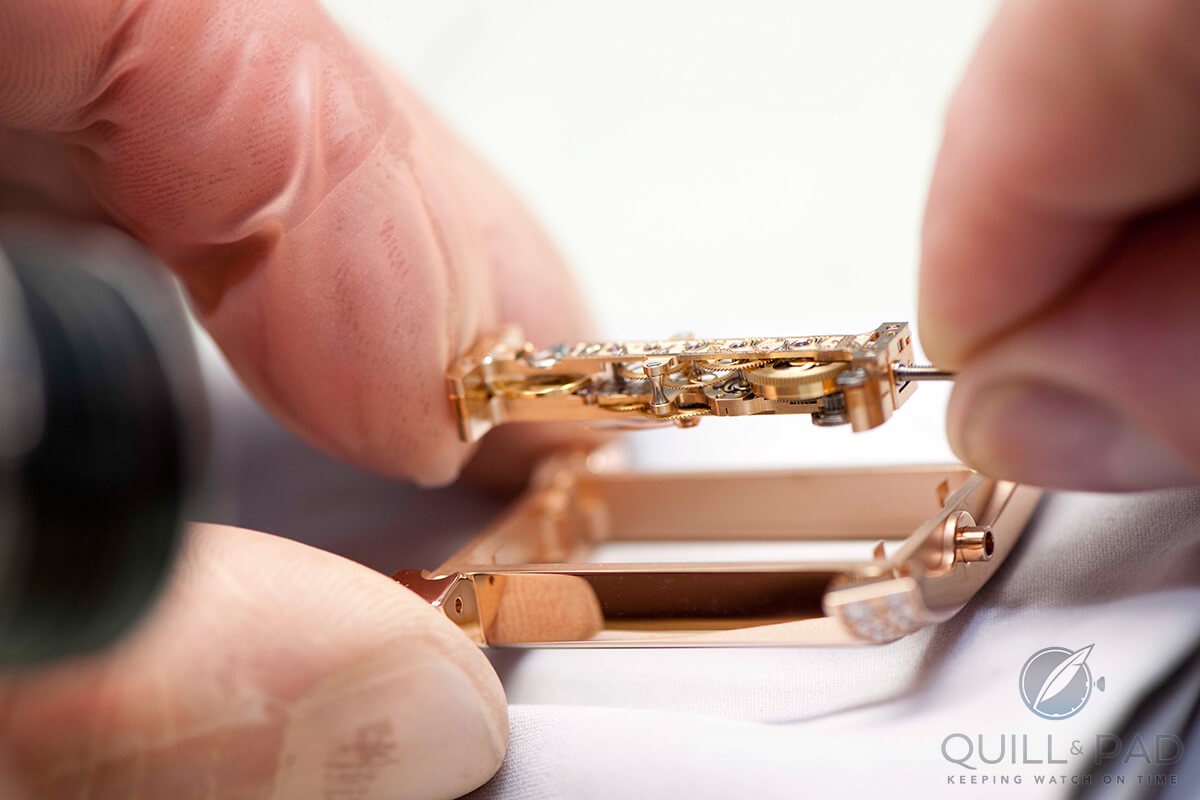

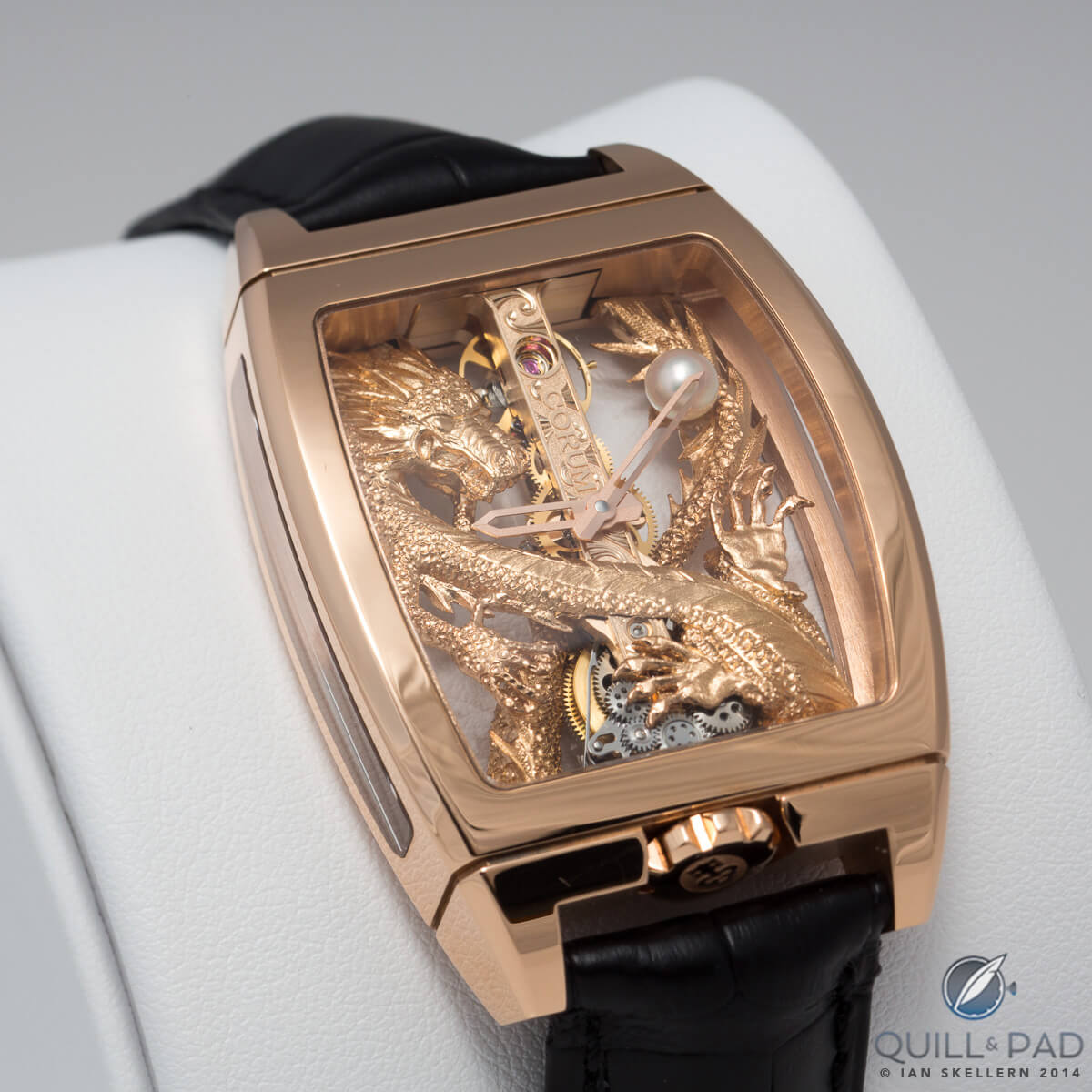
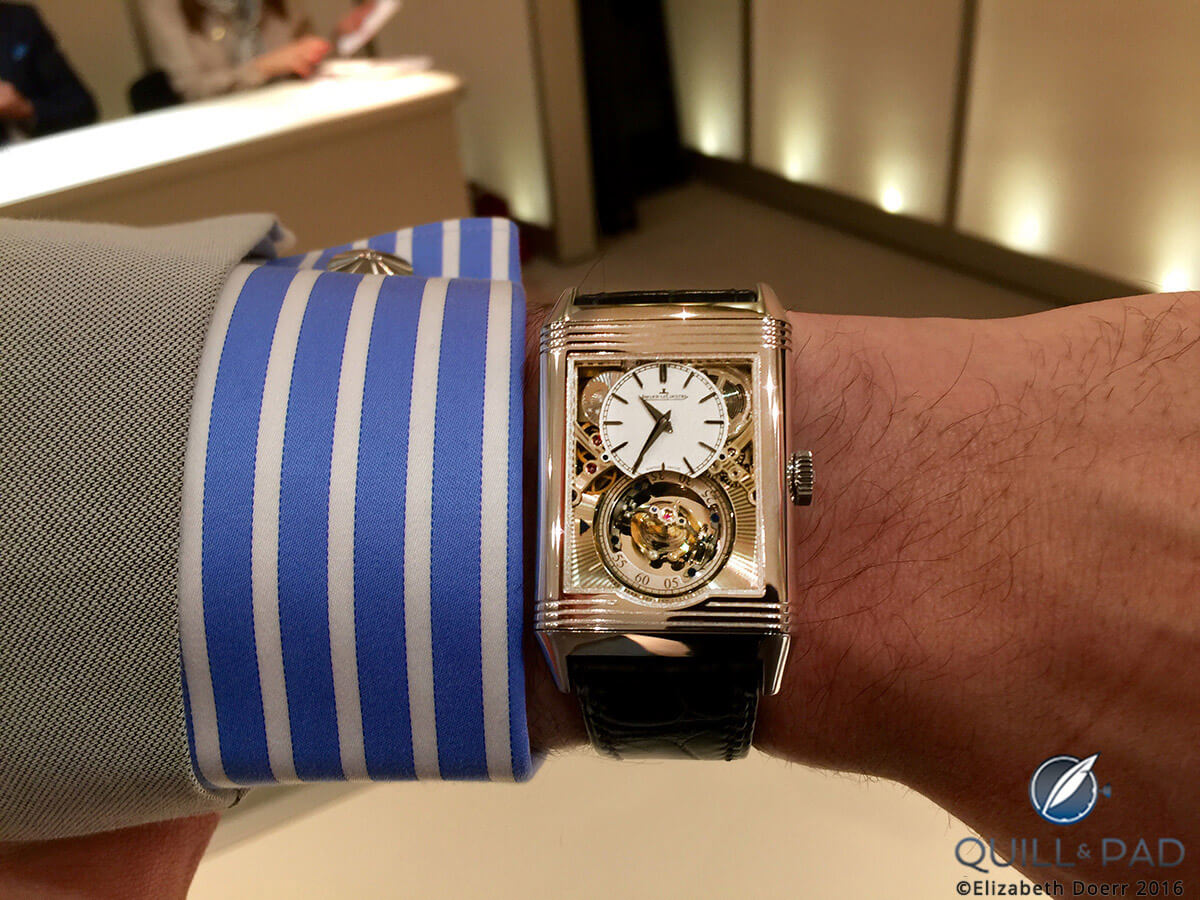
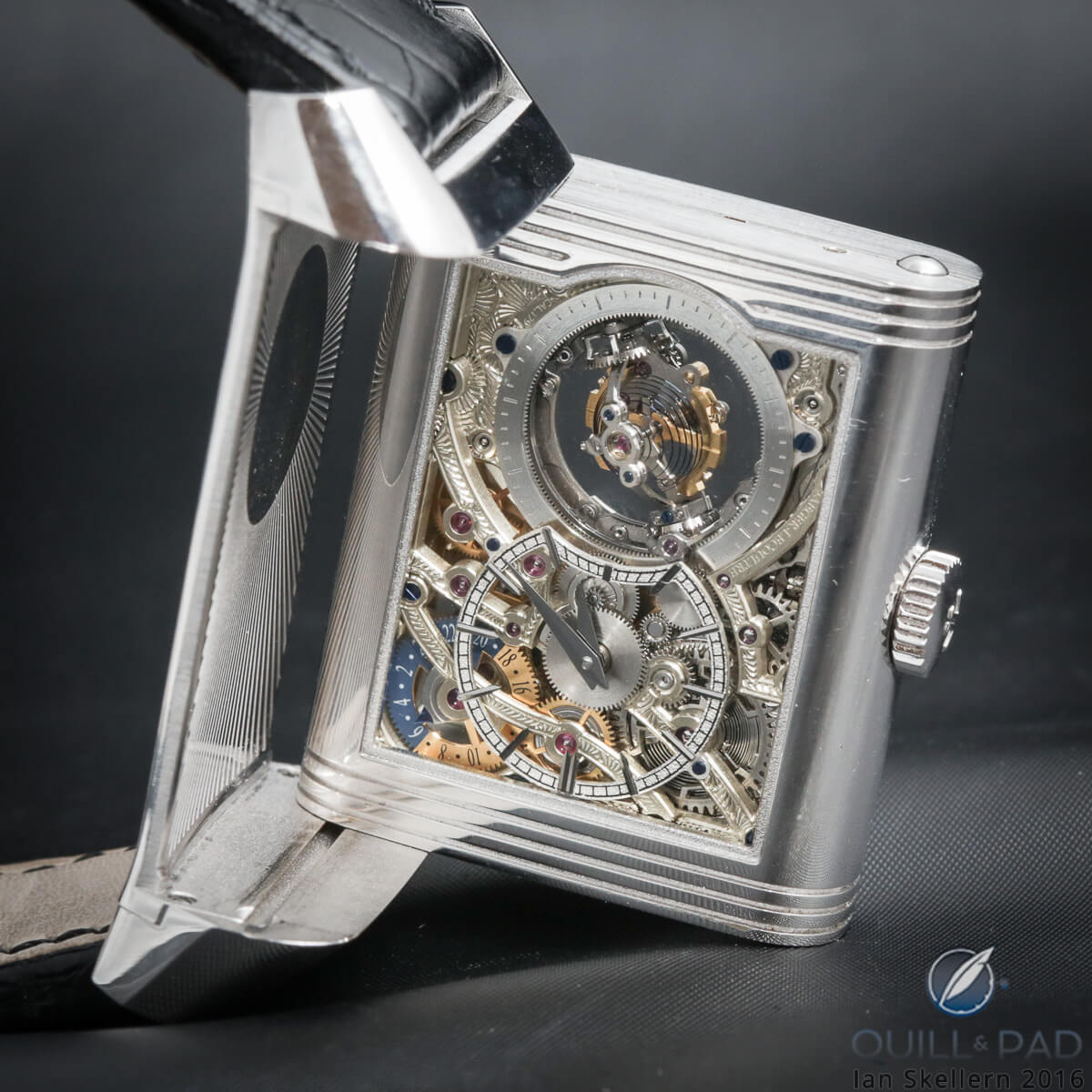
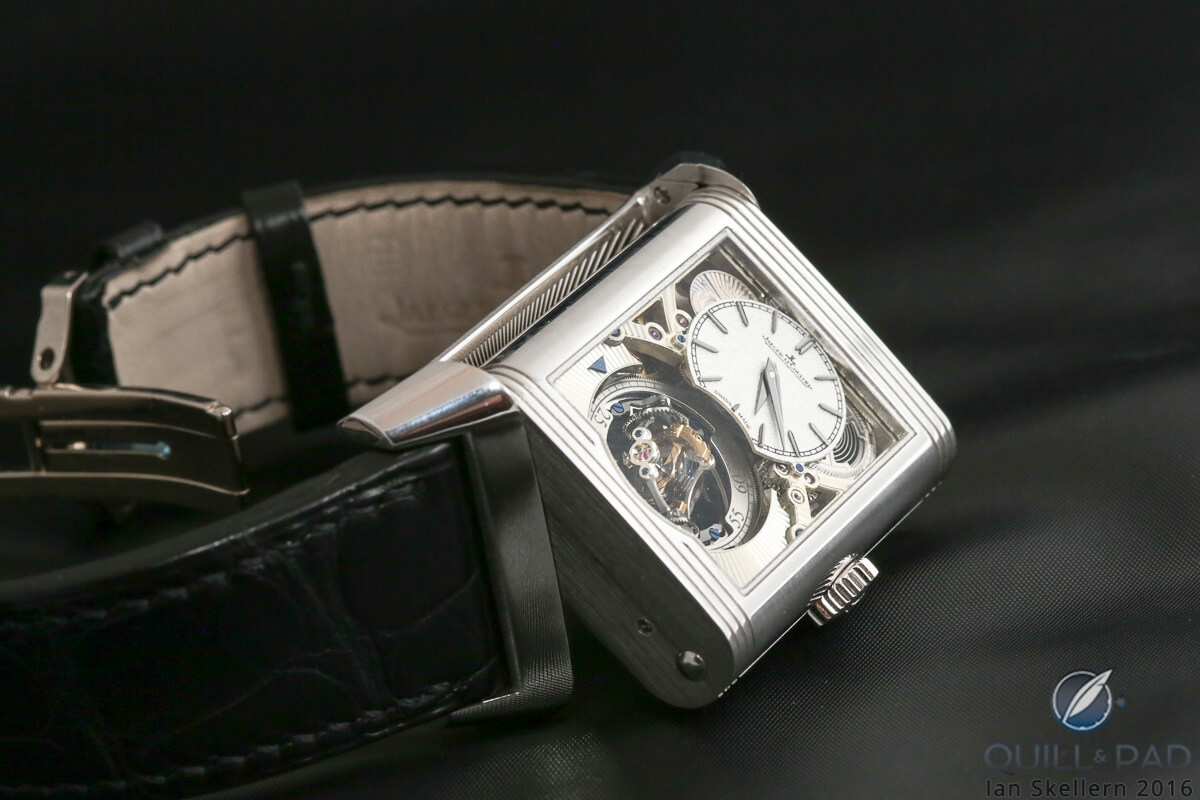
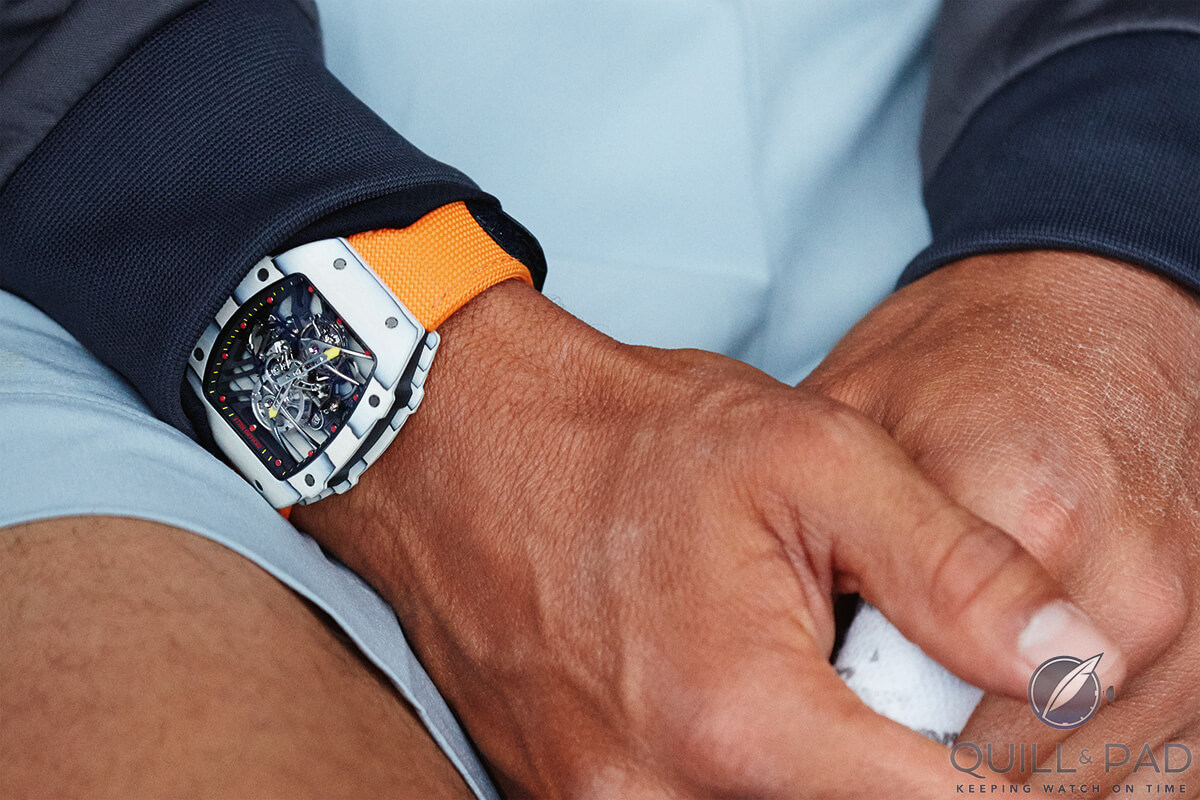

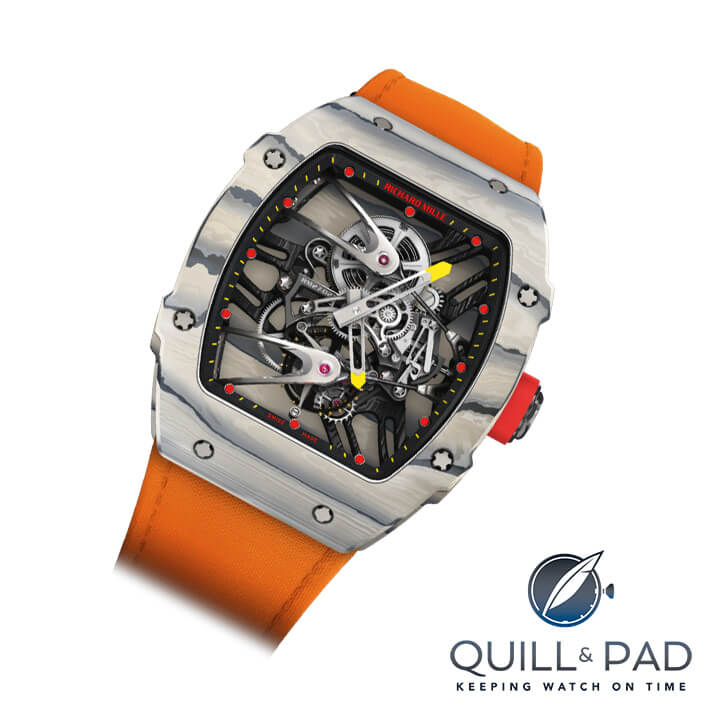
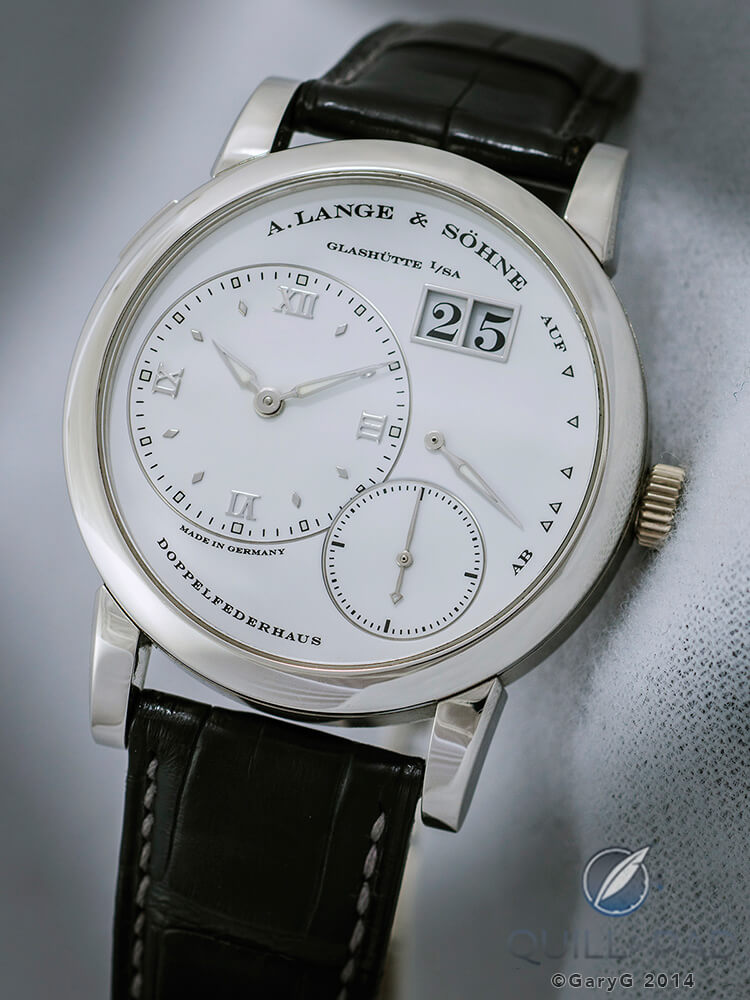
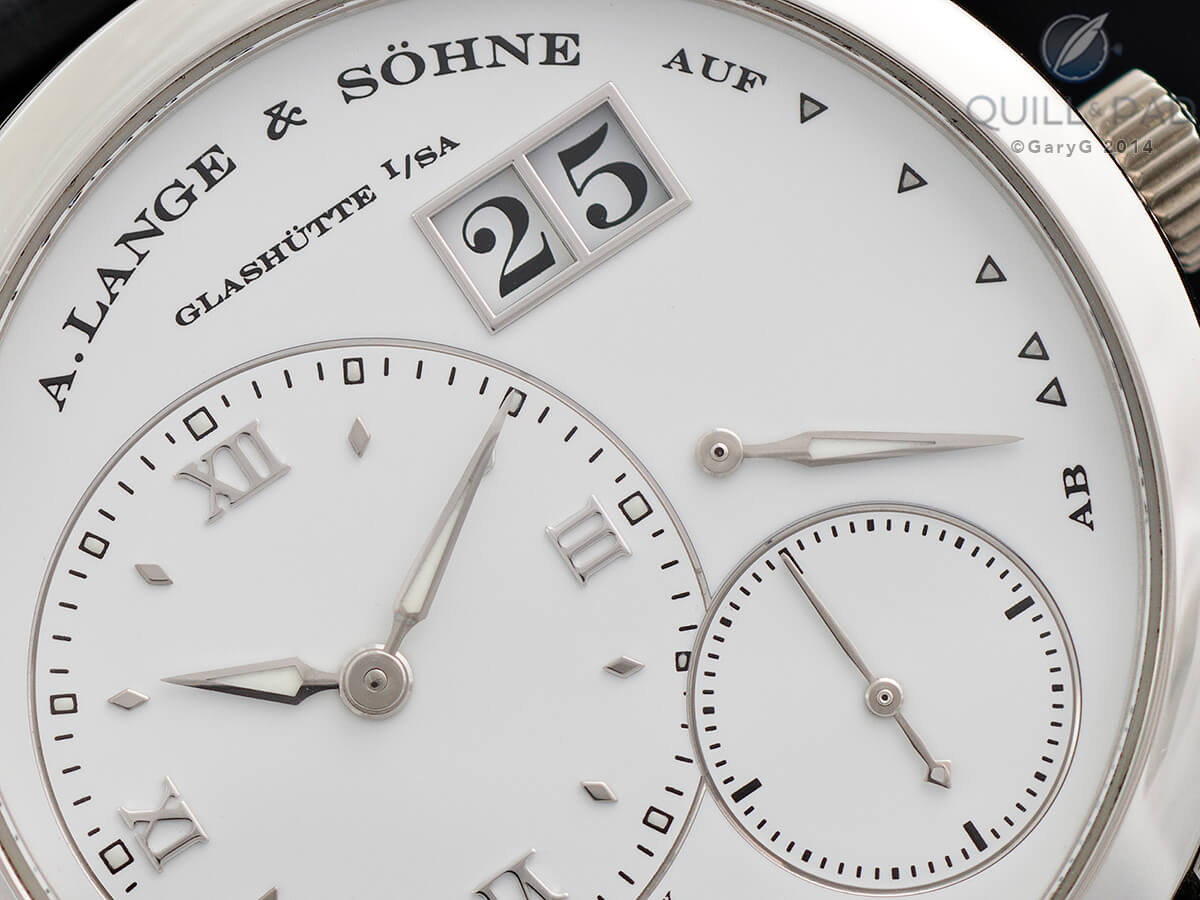
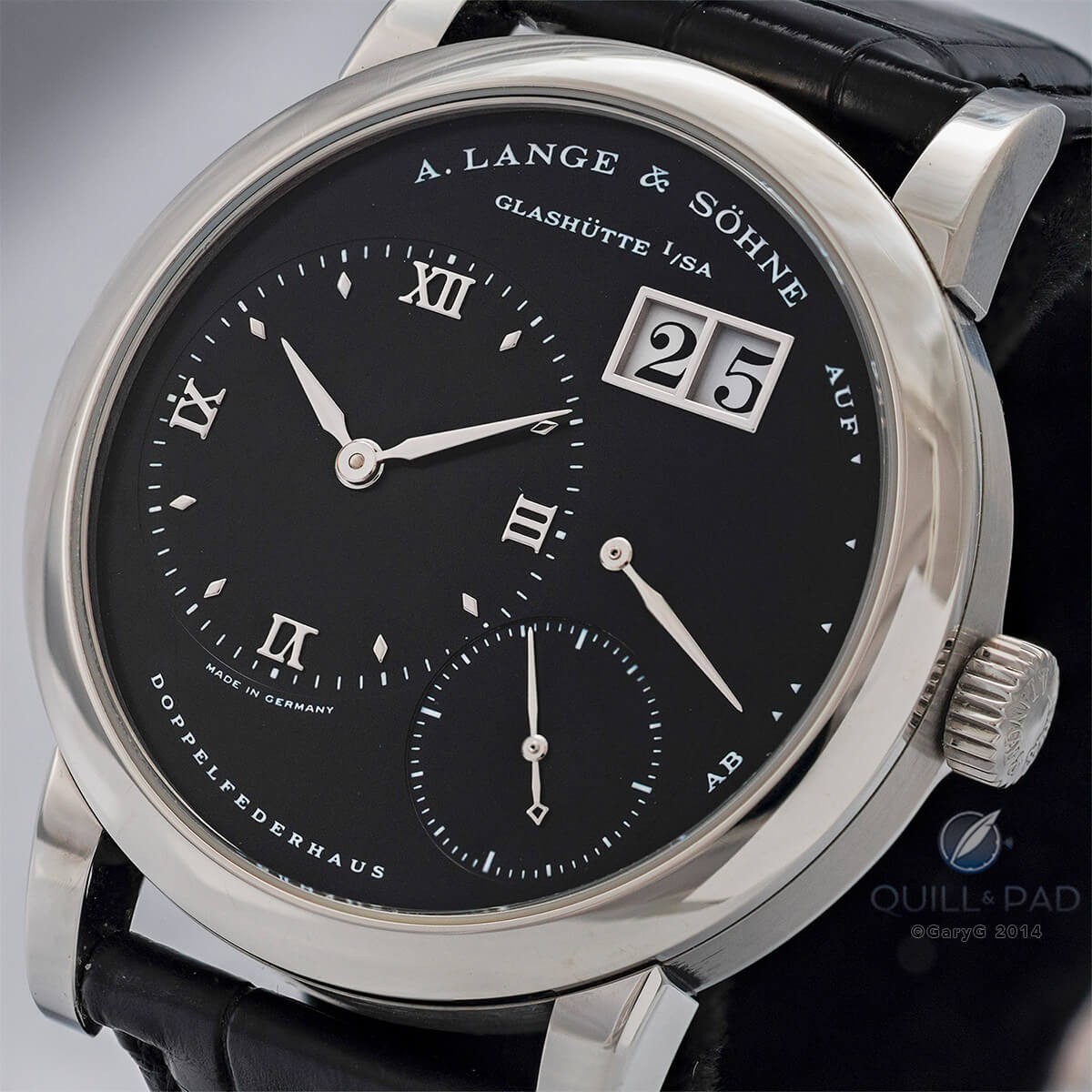
Trackbacks & Pingbacks
[…] And one of the reasons for this is the many faces of the watch that in its own way changed much about the way we view high watchmaking today: the Freak. […]
Leave a Reply
Want to join the discussion?Feel free to contribute!